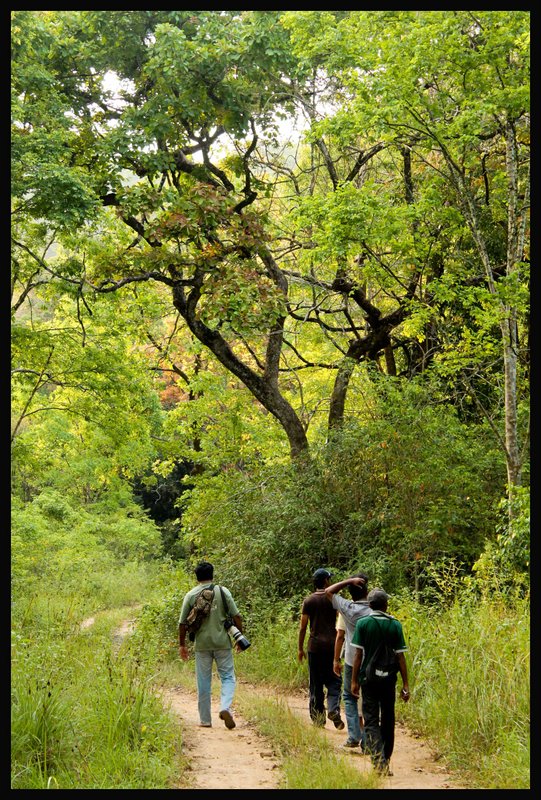The fateful walk (Pic credit: Amila Sumanapala)
Some Sri Lankans have a paralyzing fear of sloth bears. Others, like myself, are mesmerized by them. The majority are unaware that Sri Lanka is home to a species of bear. I have two encounters with Sloth bears that I’m quite fond of. The first involves the time when I nearly got myself killed and the second was when my bear-photograph curse was lifted.
The Painted partridge is one of Sri Lanka’s most elusive birds. An endangered endemic confined to the Patana grasslands of the Uva province; it’s one of the most sought after birds in the country. By now you are wondering if you’re reading the ramblings of a lunatic who promised you bears and is now delivering birds. Bear with me (no pun intended). In the jungles sometimes a Jakal leads you to a leopard at its kill. The call of a partridge could lead you to a bear.
Four of us headed off to the jungles of Nilgala that August morning accompanied by a ranger of the DWC. We walked in silence as the cold breeze caressed our souls more than our faces. I had just begun to congratulate myself for the millionth time for becoming a field biologist when we heard it. The lusty call of a male painted partridge reverberating in the morning air. As if on cue all of us looked at each other. None of us had seen this bird before and there was not a chance in hell that we would forego this opportunity.
The bird was calling from about a hundred meters away to our right from the midst of the patana. Just beyond the point of origin of the call a rocky hill loomed. We knew our target would do a Houdini act if it felt our presence in the slightest, and had to exercise extreme caution. Knowing that the bird was walled in from behind by the hill face, we decided to approach it from three directions. I and another took the left flank; one took the right while the fourth friend and the tracker went head on. The next twenty minutes marked one of the most grueling stalks in my life. We moved forward inches at a time, and that too only when the bird was calling. We froze whenever it paused and found out that freezing while bent double is a daunting task for a genus that has been biped for near on two million years. Stalking has been one of my favourite things to do in the wilds. To out-think and out-maneuver an animal on its own turf at its own game; to use every gust of wind and the sound of every creaking branch to your advantage while closing in; to feel the rush of adrenaline coursing through taut muscles, is magical to say the least.
With our battle tactics in full swing, I felt like Alexander the great at the battle of Arbela. Alexander faced the might of the entire Persian army. I: a bird thirty centimeters tall.
I finally found myself at the foot of the rock to the left of the calling bird. We were yet to see the bird that was tormenting us with its raucous call but we knew we were close. It was now a matter of moving in for the kill; or sighting, as was the case in this instance. The plan was to now move towards the bird right along the rock. Alexander the great probably looked at his generals before he charged headlong into king Darius’ massive army. I wished to do the same before resuming my battle with the Cymbopogon nardus. I’ll forever remember that decision, to look at my friend approaching head-on, as the decision that saved my life. And I’ll forever be thankful to lady luck for flirting with me that morning.
To be continued…

